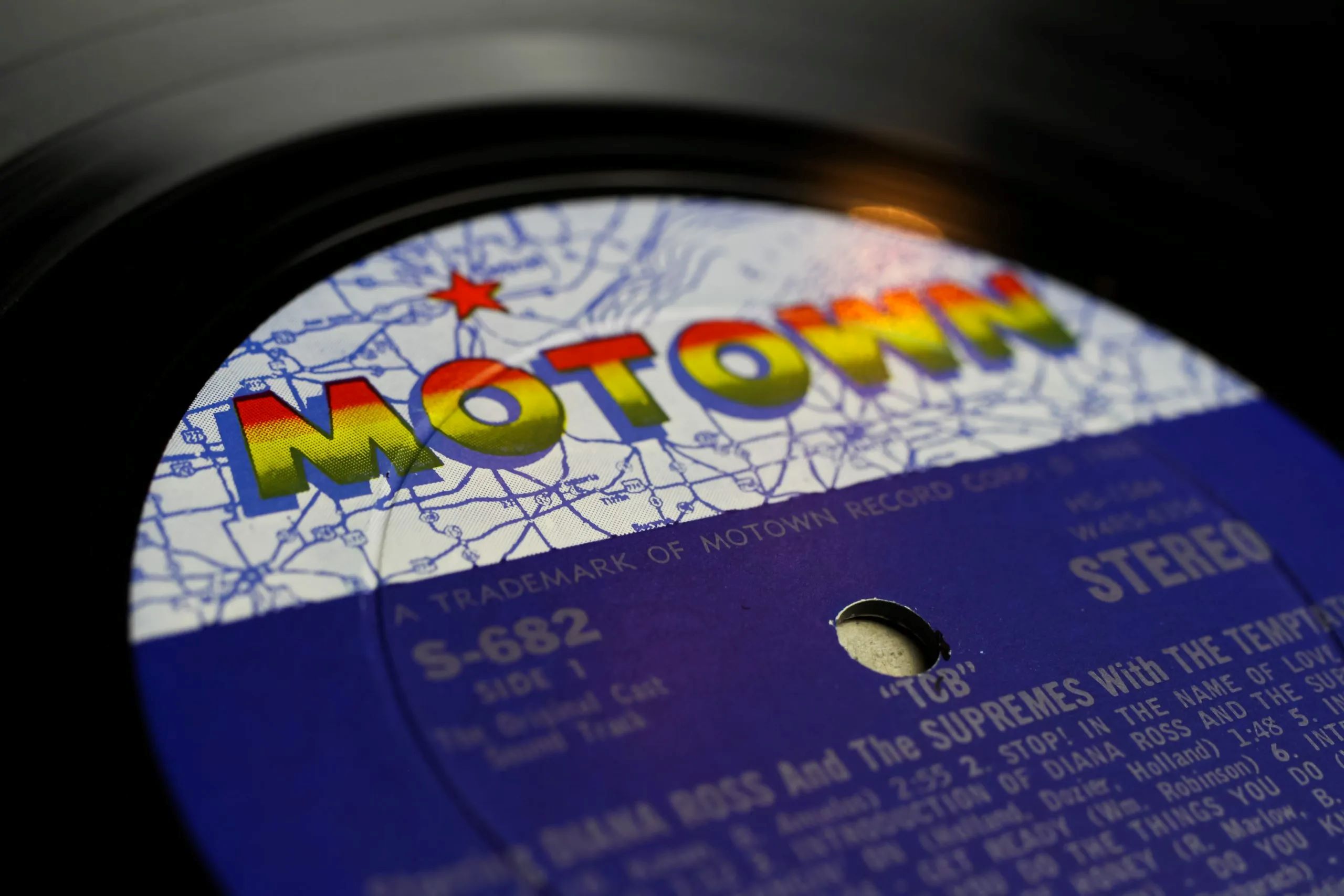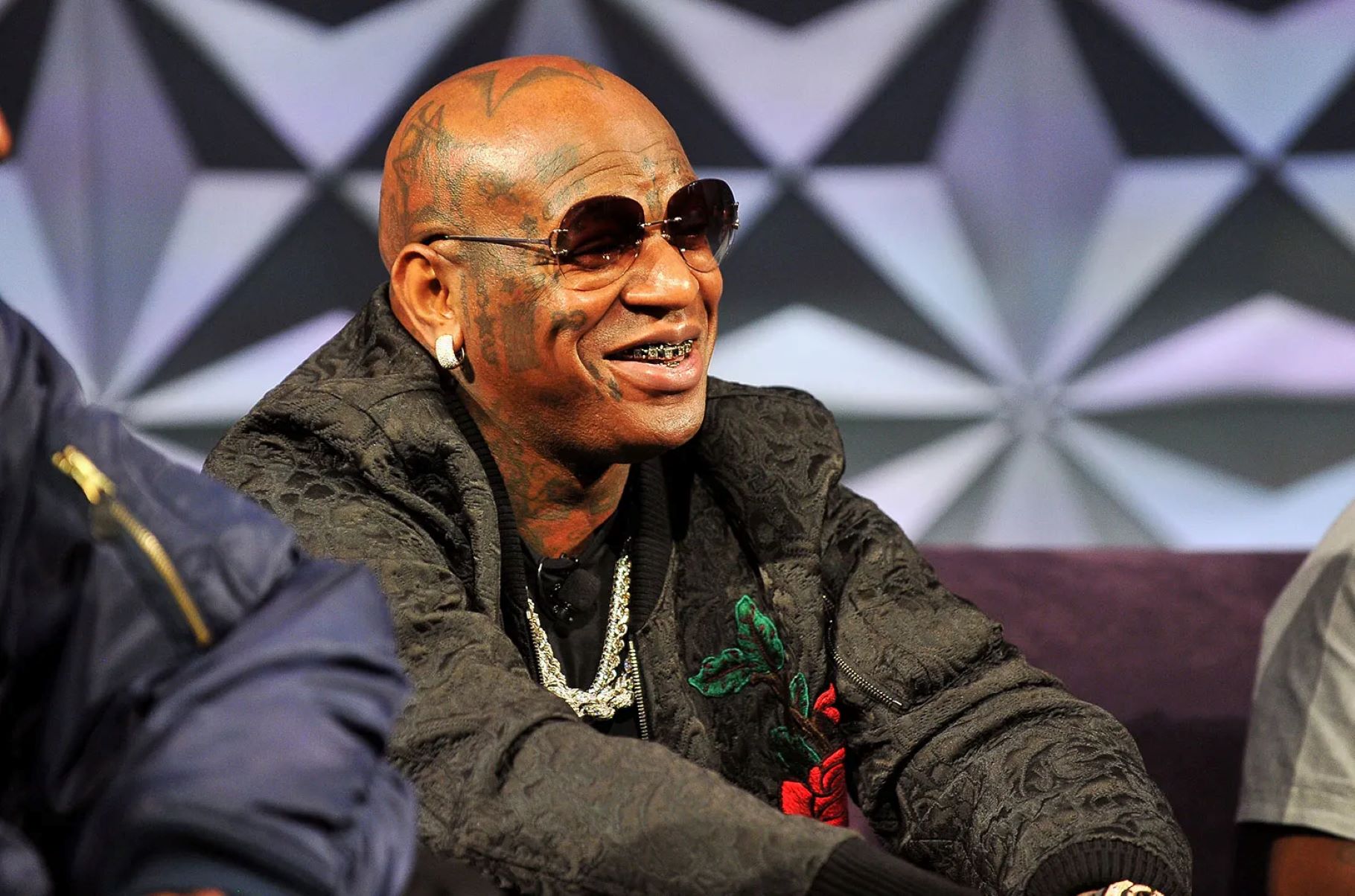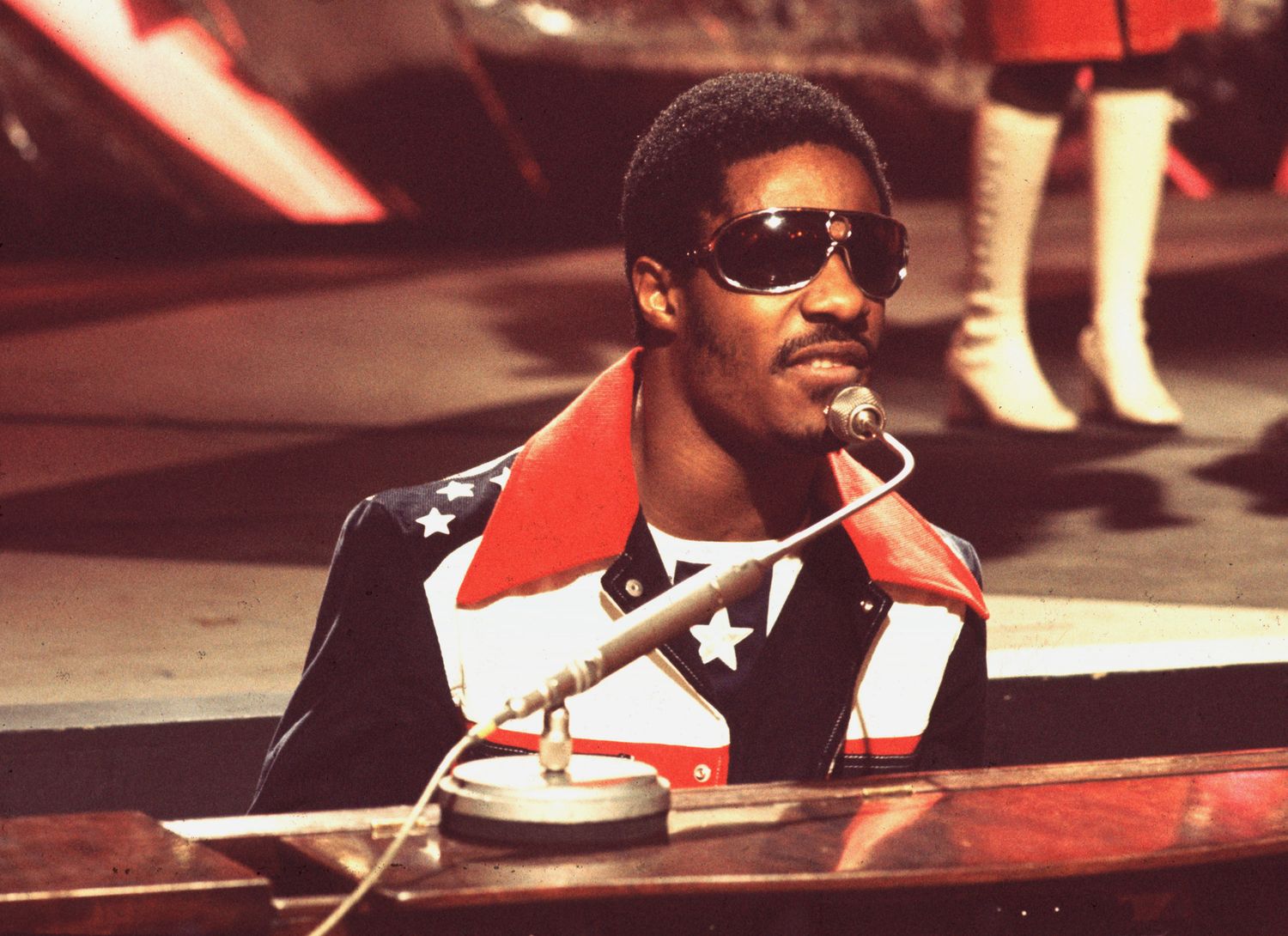Home>Production & Technology>Record Label>What Is The Motown Record Label


Record Label
What Is The Motown Record Label
Modified: February 26, 2024
Discover the history and impact of Motown, a legendary record label that revolutionized the music industry. Explore the artists, hits, and cultural significance of this iconic record label.
(Many of the links in this article redirect to a specific reviewed product. Your purchase of these products through affiliate links helps to generate commission for AudioLover.com, at no extra cost. Learn more)
Table of Contents
Introduction
Welcome to the fascinating world of record labels, where creativity, talent, and business acumen come together to cultivate musical excellence. One label that stands out in the industry is Motown, a name synonymous with groundbreaking achievements and an unmistakable sound that shaped the course of popular music. From its humble beginnings in Detroit to becoming an international powerhouse, Motown has left an indelible mark on the music industry.
Founded by Berry Gordy Jr. in 1959, Motown Records emerged as a haven for black artists at a time when racial segregation was still prevalent. It became a platform that showcased exceptional talents from the African American community, providing them with opportunities that were often denied by mainstream labels.
Under the visionary leadership of Berry Gordy Jr., Motown became a driving force in the music industry, establishing itself as “The Sound of Young America.” With its distinctive blend of soul, pop, and rhythm and blues, Motown cultivated a sound that transcended barriers and captured the hearts of listeners worldwide.
As Motown’s success soared, the label signed an impressive roster of artists, including legendary acts like Stevie Wonder, Marvin Gaye, The Supremes, and The Jackson 5. These artists not only achieved immense popularity but also showcased exceptional artistry and storytelling prowess.
The Motown Sound became a cultural phenomenon, characterized by catchy melodies, tight harmonies, and infectious rhythms. It resonated with people across generations and bridged the gap between different musical genres, simultaneously appealing to teenagers, adults, and even international audiences.
The impact of Motown extends far beyond its commercial success. The label played a pivotal role in breaking down racial barriers in the music industry, as its artists gained widespread recognition and garnered mainstream appeal. Motown’s influence was not confined to the charts; it became a catalyst for social change and a symbol of empowerment for marginalized communities.
Today, the legacy of Motown lives on, as its timeless hits continue to inspire and entertain new generations. The label’s contributions to music and culture are celebrated and recognized worldwide, solidifying its place in music history.
In this article, we will delve into the fascinating journey of Motown, exploring its founding, early successes, signed artists, the distinctive Motown Sound, and its lasting impact. Join us as we unravel the story behind one of the most iconic record labels of all time.
Founding of Motown Record Label
The birth of Motown Records can be traced back to the entrepreneurial spirit and musical vision of Berry Gordy Jr. Born in Detroit in 1929, Gordy had a passion for music from a young age and dreamt of creating a record label that would revolutionize the industry.
In 1959, Gordy founded Tamla Records, which would later evolve into Motown. The name “Motown” is a blend of “Motor” and “Town,” signifying the label’s roots in the heart of the American automobile industry.
Gordy’s initial goal was to establish a label that would showcase African American artists and appeal to a diverse audience. He was driven by a desire to defy racial boundaries and emphasize the universality of music.
With a small loan from his family, Gordy transformed a modest house on West Grand Boulevard into a recording studio, calling it Hitsville USA. This became the creative hub where many iconic Motown hits were born.
At Hitsville USA, Berry Gordy fostered an environment of creativity and excellence, providing artists with songwriting, producing, and grooming services. He believed in developing all aspects of an artist’s career, from their vocal abilities to their stage presence.
Gordy’s keen business sense and innovative marketing strategies set Motown apart from other labels. He understood the importance of connecting with audiences, and Motown became known for its polished image and professionalism.
One significant decision made by Gordy early on was to form his own publishing company, Jobete Music. This allowed Motown to retain the rights to its songs, a move that proved pivotal to the label’s long-term success.
With a talented team of songwriters and producers, including the likes of Smokey Robinson and Holland-Dozier-Holland, Motown Records quickly gained momentum. The label secured distribution deals with larger record companies, ensuring wider reach and exposure for its artists.
From the very beginning, Gordy had a clear vision for Motown: to create a sound that blended the best elements of R&B, pop, and soul. This distinctive sound, along with Motown’s meticulous production values and emphasis on songcraft, became the hallmark of the label’s success.
With Gordy’s dynamic leadership and a roster of talented artists, Motown Records became a force to be reckoned with in the music industry. The label’s impact would extend far beyond the city of Detroit, paving the way for a new era of popular music that would resonate with audiences around the world.
Early Success of Motown
Upon its founding in 1959, Motown Records wasted no time in making its mark on the music industry. The label’s unique blend of catchy melodies, infectious rhythms, and soulful vocals captivated listeners and catapulted Motown to unparalleled success.
One of Motown’s earliest breakthroughs came in 1960 with the release of “Shop Around” by The Miracles, led by Smokey Robinson. The song became Motown’s first million-selling hit, setting the stage for the label’s future triumphs.
Throughout the early 1960s, Motown churned out a string of chart-topping hits that showcased the extraordinary talents of its artists. Acts like The Supremes, Martha and the Vandellas, and The Four Tops, among others, became household names and became synonymous with the Motown sound.
In 1962, Motown achieved its first number one hit on the Billboard Hot 100 with “Please Mr. Postman” by The Marvelettes. This achievement marked a significant milestone for the label, solidifying its status as a dominant force in popular music.
As the label continued to grow, Motown expanded its influence beyond the United States. In 1964, The Supremes achieved international stardom with their hit single “Where Did Our Love Go,” which topped the charts in both the US and the UK.
Another pivotal moment in Motown’s early success came with the signing of Stevie Wonder. At just 11 years old, Wonder became the youngest artist to have a top-charting single with “Fingertips Pt. 2” in 1963. His immense talent and ability to transcend genres earned him a special place in the Motown family.
By the mid-1960s, Motown Records had achieved unprecedented success. The label dominated the charts, with its artists consistently reaching the top spots. Songs like “My Girl” by The Temptations, “Dancing in the Street” by Martha and the Vandellas, and “I Heard It Through the Grapevine” by Marvin Gaye became iconic anthems of the era.
In addition to its musical achievements, Motown played a significant role in breaking down racial barriers in the music industry. By showcasing African American artists on a global stage, Motown challenged stereotypes and opened doors for future generations of black musicians.
The early success of Motown was not limited to the music alone. Berry Gordy Jr. understood the importance of image and established Motown as a brand. With its sleek logo, polished performers, and coordinated dance routines, Motown became synonymous with style and sophistication.
However, the success of Motown was not without its challenges. The label faced criticism from some who felt it was compromising authentic black music by catering to a mainstream audience. But Gordy remained committed to his vision of breaking down barriers and creating music that would transcend race and unite people through a shared love of music.
The early success of Motown set the stage for what would become a legendary era in the music industry. The label’s ability to consistently deliver hit songs and nurture talented artists paved the way for Motown’s enduring legacy and established it as one of the most influential record labels of all time.
Signed Artists at Motown
Motown Records boasted an impressive roster of artists who not only achieved commercial success but also left an indelible mark on the music industry. From iconic solo acts to beloved groups, Motown’s signed artists became the faces and voices of a generation.
One of Motown’s most successful groups was The Supremes. Comprised of Diana Ross, Mary Wilson, and Florence Ballard, The Supremes became synonymous with the Motown sound and achieved twelve number one hits between 1964 and 1969. Songs like “Baby Love,” “Stop! In the Name of Love,” and “You Can’t Hurry Love” propelled them to international stardom.
Another iconic group signed to Motown was The Temptations. Known for their choreographed routines and soulful harmonies, The Temptations had a string of hits, including “My Girl,” “Ain’t Too Proud to Beg,” and “Papa Was a Rollin’ Stone.” Their music blended R&B, soul, and pop, and their performances captivated audiences around the world.
Stevie Wonder, a true musical prodigy, was signed to Motown at the age of 11 and went on to achieve massive success. With his soulful voice and virtuoso skills on various instruments, Wonder became one of Motown’s most beloved and influential artists. Hits like “Superstition,” “Sir Duke,” and “Isn’t She Lovely” showcased his immense talent and propelled him to superstardom.
Marvin Gaye, often called the “Prince of Motown,” was another standout artist on the label. His smooth vocals and introspective lyrics made him a favorite among fans and critics alike. Gaye’s hits like “I Heard It Through the Grapevine,” “What’s Going On,” and “Sexual Healing” are considered classics and left an indelible mark on the music industry.
The Four Tops, comprising of Levi Stubbs, Abdul “Duke” Fakir, Renaldo “Obie” Benson, and Lawrence Payton, were known for their powerful harmonies and impeccable stage presence. Chart-topping hits such as “Reach Out I’ll Be There,” “Baby I Need Your Loving,” and “Bernadette” solidified The Four Tops as one of Motown’s most beloved acts.
Other notable artists signed to Motown include Martha and the Vandellas, The Jackson 5, The Miracles, The Marvelettes, and Gladys Knight and the Pips. Each artist brought their unique style and musical prowess to the Motown family, contributing to the label’s diverse and influential sound.
Motown Records had an uncanny ability to identify and nurture exceptional talent. Berry Gordy Jr. and his team devoted themselves to artist development, honing not only their musical abilities but also their stage presence and image. The result was a collection of artists who not only resonated with audiences but also became cultural icons.
The legacy of Motown’s signed artists continues to this day. Their songs have become timeless classics and their influence can still be heard in contemporary music. Motown’s ability to discover and showcase remarkable talent remains a testament to the enduring impact of the label and its commitment to musical excellence.
The Motown Sound
When it comes to the sound of Motown Records, there is a distinctive and unmistakable quality that sets it apart from other genres. The Motown Sound, as it came to be known, emerged as a groundbreaking fusion of soul, pop, and rhythm and blues.
Characterized by its infectious melodies, harmonious vocals, and lively rhythms, the Motown Sound transcended musical boundaries and captivated a diverse audience. It blended the raw emotion and authenticity of soul music with the catchiness and polish of pop, creating a sound that was both accessible and soul-stirring.
At the heart of the Motown Sound were the talented songwriters, producers, and musicians who brought the label’s songs to life. The likes of Holland-Dozier-Holland, Smokey Robinson, and Ashford & Simpson crafted songs with irresistible hooks and meaningful lyrics that resonated with listeners.
The Motown sound was characterized by its tight and precise instrumentation. The house band, known as the Funk Brothers, provided the backbone for many of the label’s hits. Their impeccable musicianship, combined with the innovative production techniques employed by Motown, resulted in a sound that was rich, layered, and instantly recognizable.
Another distinctive element of the Motown Sound was its emphasis on vocal harmonies. From the Supremes to the Four Tops, the artists signed to Motown were known for their seamless vocal blends and captivating harmonies. The precision and unity of their voices added an extra layer of beauty and complexity to the music.
The Motown Sound was also characterized by its infectious and danceable rhythms. The label’s songs had a rhythmic groove that encouraged listeners to get up and move. Tracks like “Dancing in the Street” by Martha and the Vandellas and “Do You Love Me” by The Contours became iconic dance anthems of the era.
One of the defining features of the Motown Sound was its ability to transcend racial and cultural barriers. The music appealed to a wide audience, breaking down stereotypes and unifying people through a shared love of music. The Motown Sound served as a bridge between genres and a catalyst for change in the music industry.
As the Motown Sound gained popularity, it became synonymous with quality and professionalism. Motown artists were known for their polished appearances, choreographed dance routines, and sophisticated stage presence. The clean and sleek image that Motown projected contributed to the label’s widespread success.
Although the Motown Sound reached its peak in the 1960s and 1970s, its influence can still be heard in modern music. Artists and producers continue to draw inspiration from the infectious melodies, harmonies, and rhythms that defined the Motown era.
The Motown Sound remains a testament to the creativity and ingenuity of the artists, musicians, and producers who were part of the Motown family. It represents a golden era in music and serves as a reminder of the innovative spirit and timeless appeal of the Motown label.
Impact and Legacy of Motown
The impact of Motown Records on popular music and culture is immeasurable. As one of the most influential record labels of all time, Motown paved the way for countless artists and transformed the music industry in profound ways.
Motown played a significant role in breaking down racial barriers in the music industry. At a time when racial segregation was still prevalent, Motown gave a platform to African American artists, providing opportunities that were often denied by mainstream labels. Motown’s ability to achieve mainstream success with black artists challenged stereotypes and opened doors for future generations.
The label’s impact extended beyond music and had a profound social and cultural influence. Motown’s songs not only entertained but also addressed social issues and spread messages of love, unity, and empowerment. Songs like Marvin Gaye’s “What’s Going On” and Stevie Wonder’s “Living for the City” became anthems of the civil rights movement, giving voice to the struggles and aspirations of marginalized communities.
Motown, with its sophisticated and polished image, redefined the concept of a record label. Berry Gordy Jr.’s meticulous attention to detail and commitment to artist development set the standard for professionalism in the industry. Motown’s sleek logo, coordinated dance routines, and glamorous attire became synonymous with style and became a blueprint for future labels and artists.
The indelible mark left by Motown’s talented artists can still be felt today. Artists like Stevie Wonder, Diana Ross, Smokey Robinson, and Marvin Gaye became musical legends and are revered as icons. Their songs continue to be celebrated and embraced by new generations of music lovers.
The influence of Motown’s sound can be heard in various genres, from contemporary R&B to pop and hip-hop. The catchy melodies, soulful vocals, and infectious rhythms that defined the Motown Sound continue to inspire and shape the music industry.
Furthermore, Motown’s success served as a blueprint for future independent labels and entrepreneurs. Berry Gordy Jr.’s business acumen and innovative marketing techniques revolutionized the way music was produced, marketed, and distributed. Motown’s independent spirit and commitment to creativity have become a guiding principle for aspiring musicians and entrepreneurs.
The legacy of Motown goes beyond the music itself. It represents a cultural movement that brought people together through the power of music. Motown provided a voice for marginalized communities and became a symbol of hope and empowerment.
In recognition of its immense contributions, Motown Records received numerous accolades, including inductions into the Rock and Roll Hall of Fame and the Grammy Hall of Fame. The label’s legacy lives on in the hearts of fans, in popular culture, and in the continued admiration for the artists and music that shaped an era.
As we look back on the impact and legacy of Motown, we are reminded of the enduring power of music to transcend boundaries, inspire change, and bring people closer together. Motown’s influence continues to resonate, and its contributions will forever be celebrated in the annals of music history.
Conclusion
Motown Records stands as a testament to the power of music to transcend barriers and ignite social change. From its humble beginnings in Detroit to becoming an international sensation, Motown revolutionized the music industry by showcasing exceptional African American talent and creating a sound that resonated with people of all backgrounds.
Through the visionary leadership of Berry Gordy Jr., Motown became more than just a record label; it became a cultural phenomenon. The label’s impact on popular music and culture cannot be overstated. Motown’s artists, including Stevie Wonder, The Supremes, Marvin Gaye, and many others, became musical legends whose songs continue to be celebrated and cherished today.
The Motown Sound, with its infectious melodies, harmonious vocals, and danceable rhythms, became a bridge between different musical genres. It broke down racial barriers and served as a catalyst for social change, empowering marginalized communities and spreading messages of love and unity.
Motown’s legacy extends far beyond its commercial success. It inspired future generations of artists and entrepreneurs, and its influence can be heard in contemporary music. The label’s commitment to artist development and professionalism set new standards in the industry and created a blueprint for success.
Today, the Motown legacy lives on through the timeless songs that continue to captivate audiences and through the enduring impact on popular culture. The Motown Sound remains an integral part of music history, and its significance will continue to be celebrated and recognized for years to come.
In the ever-evolving landscape of the music industry, Motown Records remains an iconic symbol of excellence, creativity, and inclusivity. It is a reminder that music has the power to unite, inspire, and transcend boundaries. As we reflect on the incredible journey of Motown, we pay tribute to the artists, visionaries, and trailblazers who brought Motown to life and forever shaped the course of popular music.











